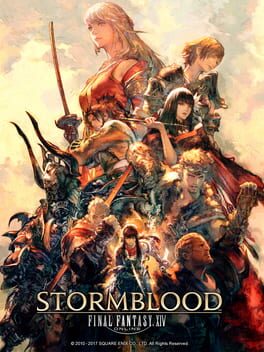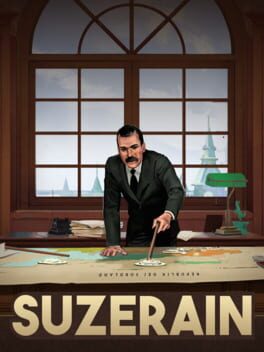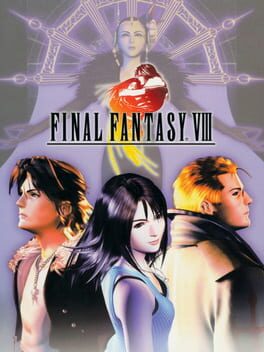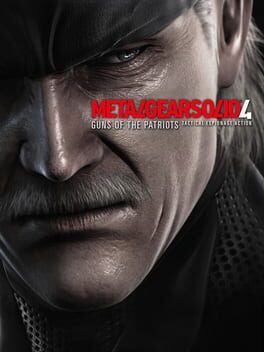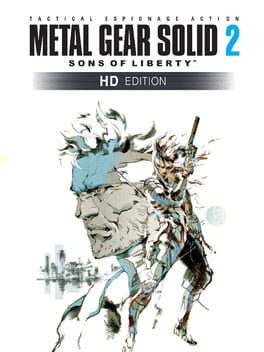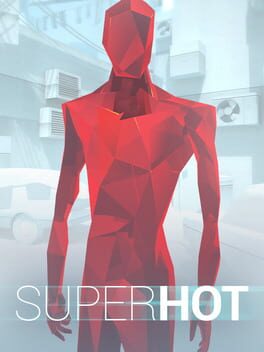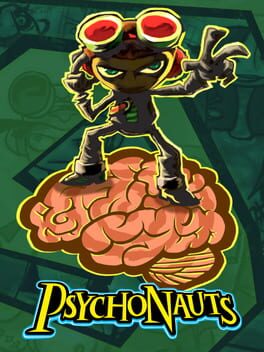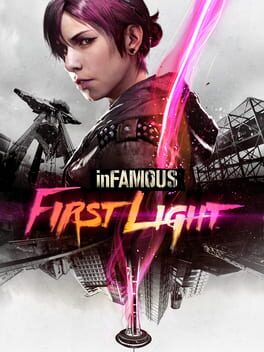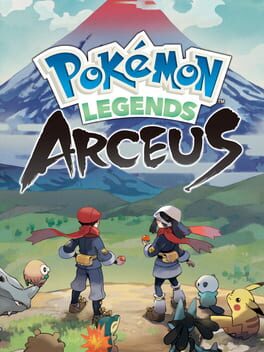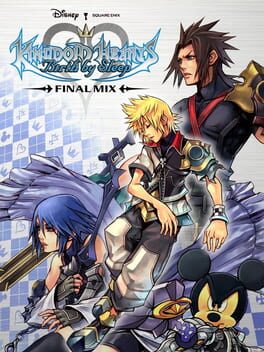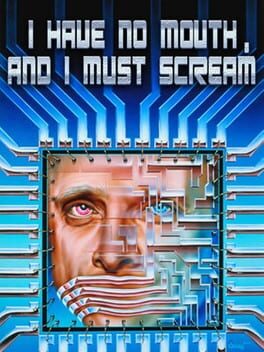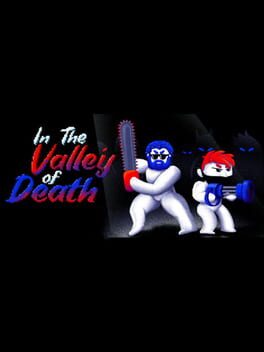GxBemis
2023
Since its decades-old debut, Final Fantasy sought to distinguish itself from its contemporaries in the RPG scene with the ambition to make a game of strategy exciting. Rivals like Phantasy Star followed the example set by Dragon Quest, featuring first-person perspective combat and minimal battle animations/effects. They succeeded in conveying the necessary stats and information for the player to understand they are engaged in combat with an enemy, and execute a strategy to defeat it, but the battle itself was mostly explained to the player in colorless textboxes, with the enemy in question typically the center of attention, staring right into the camera. The game, then, made little attempt to belie itself; there wasn't truly a wizard eradicating a goblin, or two skilled swordsmen engaged in a deadly dual. There was really just the player, and how they respond to numbers, information, and the graphics. Having its roots in tabletop and text-based adventure games, RPGs could be said to not truly require visuals at all the way, for example, an action game does. Therefore, visuals were typically a secondary concern for the genre, instead focusing on refining the rules and balance of its rigid strategy. This is not to say encounters were not engaging, or could not be dynamic or layered, but could not compare to the excitement of seeing a more visually exciting and believable depiction of an encounter in something like an action game.
Developer Square, perhaps because of their history with relatively elaborately animated PC visual novels and console action games, chose to harness their artistic talents in creating the first Final Fantasy. Its biggest innovation to the genre was not mechanical (equipment/elemental weaknesses were in games like Wizardry, multiple party members were in DQ2), but experiential. It demonstrated the value of even minor cosmetics and furnishings to the campaign. Not only could you choose your party of characters from the start, but you can see them fight, get injured, and faint. You can see them use the spell you just bought, or see them swing the axe you just found. Final Fantasy owes much to other RPGs and adventure games, but what made it unique from the beginning was the commitment to make the player believe in its own fantasy, sparking their imagination with what they can see and time and time again.
As the hardware accelerated, the games attempted to depict more detail and move more believably. The SNES era injected real-time elements into the conventional, ludic turn-based format. The PS1 games rendered sprites in three dimensions to portray a sense of scale, while the PS2 fully realized proportional, detailed 3D worlds along with, in the case of XI and XII, fully real-time combat systems. Again, the insistence is not strictly on realism, but the excitement of witnessing a believable and well-defined fantasy world in action. Now with XVI, following the action-based direction from XIV and XV, there is a minimization of abstraction in the name of maximizing excitement and believability. This is all to say the technical action inspiration a la DMC makes sense for this series in this context to a degree, but the likely reason some feel so alienated by the approach regardless is more of a recent trend defined as a conflict between expressions of skill and strategy. I-XIII, despite the changes in hardware and central mechanics, are ultimately all games of strategy. Of the player they demand every little skill, or proficiency with control of the characters, and this was an intentional choice for the games to remain accessible yet complex; however, this choice would somewhat impede upon the developers' desire to make these games more exciting and visually spectacular. Even with ATB, an encounter can only be so exciting and believable when all of the characters are lined up in neat rows waiting for their chance to attack. XII in particular took great pains to retain the full suite of both party-based and command-based strategy the series was known for in a real-time, offline format, resulting in the genius concept of the gambit system to mitigate the demands of the strategy in battle by allowing the player to anticipate and automatically counteract much of them before the fight starts. XIV is, for all intents and purposes, the beginning of the series primarily demanding player skill and proficiency, particularly with the expansions, to properly execute rotations and avoid fatal damage. Strategy is however still important for coordination in party-based raids and trials, which some might consider the real meat of the gameplay. With XV acting as an ineffective compromise between demands of skill and strategy for the offline series, XVI minimized strategy more than any other game in the main series to date, to the extent that the quality or depth of player strategy no longer singularly determines victory but instead only determines how efficiently or quickly you win. Accessibility rings and easy balancing seem to dodge around the fact that unlike the rest of the series, if you aren't skilled enough with control of the game, you simply aren't going to beat it, no matter how carefully you build out your character or think out your strategy beforehand.
The original thesis of making strategy exciting feels somewhat diluted now, but for a game that refuses to be enslaved to its own legacy, it does not feel fair to judge it on that standard. XVI is different from series conventions, even moreso than normal, but different is not worse. When combat is the most consistently engaging its been in the entire series, it's hard to complain. Criticisms of repetitive gameplay against damage sponge opponents confused me; if anything, like VIIR I wish combat only lasted longer. There are so many abilities to experiment with and many ways to weave them into your basic combo. The satisfaction lies in the loop experimentation and discovery, supplemented by a steady stream of eikonic ability unlocks and generous re-speccing. Also, a serious commendation is in order for successfully engineering cinematic set-pieces with the eikon battles that don't sacrifice much mechanical depth or rob the player of too much control. After years of Uncharted and the like streamlining their control schemes to provide surface-level thrills, XVI proves these sequences can actually be fun to play. However, the balancing on the base difficulty threatens that fun, defeat is rare despite decently hard-hitting enemies because of overly generous means of recovery.
Others have commented on the lack of mini-games or additional ways to engage with the world outside of combat. In my mind, this choice hearkens back to the progression of the classic games I-V, but where those games provided a consistent sense of exploration of their fields and dungeons, XVI struggles to fill its runtime with overlong sections of talking, sidequesting, and other mechanically unengaging tasks. The bulk of this is centered on the hideaway, and considering the lack of interactive variety I think focusing so much on a hub like this was a mistake, mostly serving to prevent the game from naturally moving its story forward by exploring within the world itself. In the rest of the series, you're usually rewarded for pushing through a long, repetitive string of combat encounters with more story, but in XVI the opposite is true, the monotony is in progressing the story because you do the same sorts of things in the same place. I won't go much deeper into the story because if you made it this far you've indulged me plenty already, but I find after a familiar but well-balanced introduction it gradually loses steam about mid-way through, and the campaign structure cannot mainly be held responsible. It does not expound enough in the narrative to match the depth of its thematic ambitions, and while I like all the antagonists (sans Ultima) they do lack a certain depth or definition that would get me to see them as the human, tragic figures the game wants me to see them as. There are fascinating thematic elements, and some neat character arcs, but it is quite telling that a Final Fantasy ending left me feeling almost nothing at all as the credits rolled. I've warmed on it since, but it requires a lot of digging and extrapolation for what may be there but is not expressed clearly.
Claiming Final Fantasy has some kind of identity crisis with this installment misunderstands that this was ever a series interested in subtle innovations. I don't think Sakaguchi ever had the intention of making a sequel to his Final Fantasy. Though each numbered game bears the same name, they are truthfully standalone works, turns of a page unbeholden to what came before, except for the commitment to believe in their own fantasies. That boldness is refreshing in such a creatively stifling climate, and the fear of missteps or misdirection should not dissuade the fans from attempting to embrace each entry on their own terms and in good faith.
Developer Square, perhaps because of their history with relatively elaborately animated PC visual novels and console action games, chose to harness their artistic talents in creating the first Final Fantasy. Its biggest innovation to the genre was not mechanical (equipment/elemental weaknesses were in games like Wizardry, multiple party members were in DQ2), but experiential. It demonstrated the value of even minor cosmetics and furnishings to the campaign. Not only could you choose your party of characters from the start, but you can see them fight, get injured, and faint. You can see them use the spell you just bought, or see them swing the axe you just found. Final Fantasy owes much to other RPGs and adventure games, but what made it unique from the beginning was the commitment to make the player believe in its own fantasy, sparking their imagination with what they can see and time and time again.
As the hardware accelerated, the games attempted to depict more detail and move more believably. The SNES era injected real-time elements into the conventional, ludic turn-based format. The PS1 games rendered sprites in three dimensions to portray a sense of scale, while the PS2 fully realized proportional, detailed 3D worlds along with, in the case of XI and XII, fully real-time combat systems. Again, the insistence is not strictly on realism, but the excitement of witnessing a believable and well-defined fantasy world in action. Now with XVI, following the action-based direction from XIV and XV, there is a minimization of abstraction in the name of maximizing excitement and believability. This is all to say the technical action inspiration a la DMC makes sense for this series in this context to a degree, but the likely reason some feel so alienated by the approach regardless is more of a recent trend defined as a conflict between expressions of skill and strategy. I-XIII, despite the changes in hardware and central mechanics, are ultimately all games of strategy. Of the player they demand every little skill, or proficiency with control of the characters, and this was an intentional choice for the games to remain accessible yet complex; however, this choice would somewhat impede upon the developers' desire to make these games more exciting and visually spectacular. Even with ATB, an encounter can only be so exciting and believable when all of the characters are lined up in neat rows waiting for their chance to attack. XII in particular took great pains to retain the full suite of both party-based and command-based strategy the series was known for in a real-time, offline format, resulting in the genius concept of the gambit system to mitigate the demands of the strategy in battle by allowing the player to anticipate and automatically counteract much of them before the fight starts. XIV is, for all intents and purposes, the beginning of the series primarily demanding player skill and proficiency, particularly with the expansions, to properly execute rotations and avoid fatal damage. Strategy is however still important for coordination in party-based raids and trials, which some might consider the real meat of the gameplay. With XV acting as an ineffective compromise between demands of skill and strategy for the offline series, XVI minimized strategy more than any other game in the main series to date, to the extent that the quality or depth of player strategy no longer singularly determines victory but instead only determines how efficiently or quickly you win. Accessibility rings and easy balancing seem to dodge around the fact that unlike the rest of the series, if you aren't skilled enough with control of the game, you simply aren't going to beat it, no matter how carefully you build out your character or think out your strategy beforehand.
The original thesis of making strategy exciting feels somewhat diluted now, but for a game that refuses to be enslaved to its own legacy, it does not feel fair to judge it on that standard. XVI is different from series conventions, even moreso than normal, but different is not worse. When combat is the most consistently engaging its been in the entire series, it's hard to complain. Criticisms of repetitive gameplay against damage sponge opponents confused me; if anything, like VIIR I wish combat only lasted longer. There are so many abilities to experiment with and many ways to weave them into your basic combo. The satisfaction lies in the loop experimentation and discovery, supplemented by a steady stream of eikonic ability unlocks and generous re-speccing. Also, a serious commendation is in order for successfully engineering cinematic set-pieces with the eikon battles that don't sacrifice much mechanical depth or rob the player of too much control. After years of Uncharted and the like streamlining their control schemes to provide surface-level thrills, XVI proves these sequences can actually be fun to play. However, the balancing on the base difficulty threatens that fun, defeat is rare despite decently hard-hitting enemies because of overly generous means of recovery.
Others have commented on the lack of mini-games or additional ways to engage with the world outside of combat. In my mind, this choice hearkens back to the progression of the classic games I-V, but where those games provided a consistent sense of exploration of their fields and dungeons, XVI struggles to fill its runtime with overlong sections of talking, sidequesting, and other mechanically unengaging tasks. The bulk of this is centered on the hideaway, and considering the lack of interactive variety I think focusing so much on a hub like this was a mistake, mostly serving to prevent the game from naturally moving its story forward by exploring within the world itself. In the rest of the series, you're usually rewarded for pushing through a long, repetitive string of combat encounters with more story, but in XVI the opposite is true, the monotony is in progressing the story because you do the same sorts of things in the same place. I won't go much deeper into the story because if you made it this far you've indulged me plenty already, but I find after a familiar but well-balanced introduction it gradually loses steam about mid-way through, and the campaign structure cannot mainly be held responsible. It does not expound enough in the narrative to match the depth of its thematic ambitions, and while I like all the antagonists (sans Ultima) they do lack a certain depth or definition that would get me to see them as the human, tragic figures the game wants me to see them as. There are fascinating thematic elements, and some neat character arcs, but it is quite telling that a Final Fantasy ending left me feeling almost nothing at all as the credits rolled. I've warmed on it since, but it requires a lot of digging and extrapolation for what may be there but is not expressed clearly.
Claiming Final Fantasy has some kind of identity crisis with this installment misunderstands that this was ever a series interested in subtle innovations. I don't think Sakaguchi ever had the intention of making a sequel to his Final Fantasy. Though each numbered game bears the same name, they are truthfully standalone works, turns of a page unbeholden to what came before, except for the commitment to believe in their own fantasies. That boldness is refreshing in such a creatively stifling climate, and the fear of missteps or misdirection should not dissuade the fans from attempting to embrace each entry on their own terms and in good faith.
All the fun is had in Othard, where the game's jaunt most resembles Heavensward, fresh fantasy elements delivered at a steady pace. A vaguely-intimidating impirial threat is most of what Stormblood can muster for its liberation-themed plotlines in Ala Mhigo and Doma, and as such generally fails to substantially raise the stakes until the patch quests' allusions. By contrast, I felt the difficulty curve finally hit an apt degree of challenge for regular dungeons and trials, which themselves are the game's most inventive so far.
2020
This review contains spoilers
I was rather hopeful when my constitutional reform barely pass the Court. I hadn't burned many bridges, trade deals and infrastructure promised an economic recovery, the intranational protests and violence calmed, and oversaw reforms for workers' rights, women's rights, and the education system. Sticking to the allies I could please with the resources I had combined with a general populist approach felt like the path to victory. My run ended with my country slipping back into recession, then a depression, Rumburg instantly pushing past my paltry military force and somewhat unfaithful allies, and imprisonment leading to the electric chair. I failed my country, my family, and my administration.
If you antagonize every dishonest bloodsucker, they'll conspire to crush you. Allyship is impossible without victimization. Most of all this is a narrative-driven game; success depends entirely on delicate subterfuge represented in the micro-choices in dialogue branches. Every choice has ramifications and it is not a kind world. Already thinking of a dictator run for revenge.
If you antagonize every dishonest bloodsucker, they'll conspire to crush you. Allyship is impossible without victimization. Most of all this is a narrative-driven game; success depends entirely on delicate subterfuge represented in the micro-choices in dialogue branches. Every choice has ramifications and it is not a kind world. Already thinking of a dictator run for revenge.
1999
This review contains spoilers
Today's fantasy, tomorrow's reality. FF7 opened the floodgates by demonstrating what this series can do with a camera, but FF8 has loftier cinematic ambitions, predicated on a nascent form of art while facing towards the new millennium. Greatly expanded character animation, including motion capture, detail replaces the simplistic theatrics of emoting and gesturing seen in entries prior. The abstraction has been peeled away for something much for subtle, more difficult to discern. It attempts to capture not just the details of how people behave, as in movies, but aims to go beyond that in capturing what they think. That's why, even though the simple joy of fighting dragons and sorceresses remains, the game maintains a potent sense of realism, the effect of which can reach beyond the lens of a camera. All the nods to 2001 feel appropriate for a game that tries to move its medium forward into uncharted territory.
Observe, for example, the game's theme of time. I am reminded of a scene early on in the Dollet mission. The sequence is more bombastic than FF7's opening, prospective SeeDs taking down soldiers with great pace. Then, when they get to the central square, an unexpected moment of calm. For a few minutes, there is nothing for the player to do but wait while distant sounds of warfare fade in and out of earshot. A stray dog shows up, which refuses to abandon an increasingly impatient Seifer. The image pairs with the feelings the player is experiencing, drawing a natural comparison between the three SeeDs and the dog; domesticated to the point of dependence on some greater command. It informs the player of how Seifer feels without extensive backstory, and the game follows suit with other characters. Previous entries give each character of the party baggage that would be resolved by returning to their past in backstory, but in FF8 usually learn the most about characters based on present circumstance. The truth of Irvine's character is exposed when he falters at a critical moment at the end of disc 1. Selphie becomes more proactive when she learns her home garden is in immediate danger. Squall is set to drift in aimless reflection until the garden demands his leadership. The game constantly keeps you in the moment, and will remind you of the present in its moments of recollection. Time moves forward, and life goes on, and its something the player can feel for themselves.
The theme of time can even punish players that don't slow down to acknowledge what, despite first impressions, plays out as an unconventional RPG experience. There are no chests or equipment, spells can only be drawn from opponents, and enemy levels scale with your party. Encounters remain difficult enough to require more of the player than a cursory understanding of its core systems, which exist as a kind of logical extreme of the series' recent lateral rather than linear character progression. If your first playthrough was anything like mine, it likely involved auto junctioning whatever spells I had managed to draw for individual characters before swift defeat forced me to reassess the entire setup. The remaining hours of the playthrough contained hours of menuing, engineering builds that I would test before adjusting again, trying to construct something out of almost nothing. It's a system where a player's proficiency directly correlates to the time and attention they are willing to spend perfecting their own creation. Whereas other RPGs generally try to mitigate monotony the more the player can strategize with what they have or gained, FF8 gives the player the freedom to control how much monotony they inflict upon themselves to give the engine more fuel, or polish the rough edges of an amateur's creation. It's emblematic of the team's attempts to redefine what an RPG can be, and what games can express at large.
Observe, for example, the game's theme of time. I am reminded of a scene early on in the Dollet mission. The sequence is more bombastic than FF7's opening, prospective SeeDs taking down soldiers with great pace. Then, when they get to the central square, an unexpected moment of calm. For a few minutes, there is nothing for the player to do but wait while distant sounds of warfare fade in and out of earshot. A stray dog shows up, which refuses to abandon an increasingly impatient Seifer. The image pairs with the feelings the player is experiencing, drawing a natural comparison between the three SeeDs and the dog; domesticated to the point of dependence on some greater command. It informs the player of how Seifer feels without extensive backstory, and the game follows suit with other characters. Previous entries give each character of the party baggage that would be resolved by returning to their past in backstory, but in FF8 usually learn the most about characters based on present circumstance. The truth of Irvine's character is exposed when he falters at a critical moment at the end of disc 1. Selphie becomes more proactive when she learns her home garden is in immediate danger. Squall is set to drift in aimless reflection until the garden demands his leadership. The game constantly keeps you in the moment, and will remind you of the present in its moments of recollection. Time moves forward, and life goes on, and its something the player can feel for themselves.
The theme of time can even punish players that don't slow down to acknowledge what, despite first impressions, plays out as an unconventional RPG experience. There are no chests or equipment, spells can only be drawn from opponents, and enemy levels scale with your party. Encounters remain difficult enough to require more of the player than a cursory understanding of its core systems, which exist as a kind of logical extreme of the series' recent lateral rather than linear character progression. If your first playthrough was anything like mine, it likely involved auto junctioning whatever spells I had managed to draw for individual characters before swift defeat forced me to reassess the entire setup. The remaining hours of the playthrough contained hours of menuing, engineering builds that I would test before adjusting again, trying to construct something out of almost nothing. It's a system where a player's proficiency directly correlates to the time and attention they are willing to spend perfecting their own creation. Whereas other RPGs generally try to mitigate monotony the more the player can strategize with what they have or gained, FF8 gives the player the freedom to control how much monotony they inflict upon themselves to give the engine more fuel, or polish the rough edges of an amateur's creation. It's emblematic of the team's attempts to redefine what an RPG can be, and what games can express at large.
Some structural experimentation is mostly successful in alleviating the monotony of playing through another one of these RPG-lite open world behemoths. I still don't see the point of the narrative contrasting the laboriously recreated wilderness and lavish scenery with artificial approximations of nature when the actual human characters always feel so unnatural. Admittedly most of the main scenes adopt mocap for more detailed animations, but what remains is their thousand-yard stare through dry, stilted exposition. The unconvincing characters are a left-over from Zero Dawn, along with a plot that struggles to invent a hook for itself. At some point, I realized the story was more engaging in the areas where it forsook the main plotline the most, which sort of makes sense. All sense of intimacy in the stakes are abandoned by the finale, when I'd imagine the players would really want something that rewards their connection to the densely packed environments, not whatever lame, otherworldly sci-fi concept it decides to throw at you next.
Mechanically, it's Zero Dawn with the same core strengths and weaknesses. Encounters are still awkward despite improved mobility. Your immediate surroundings are as much of a hindrance as a help, with any tactical advantage foresight brings you usually canceled out by running into a random rock you didn't see while escaping an attack. The glider does allow for mild improvements in the mechanics of traversal, and the amount of climbable surfaces is pretty impressive. Taking down a huge machine generally feels rewarding despite the clunkiness, so that's still the main draw here. The rest is boiler plate design you've seen elsewhere, just with more toys to play with than last time.
Mechanically, it's Zero Dawn with the same core strengths and weaknesses. Encounters are still awkward despite improved mobility. Your immediate surroundings are as much of a hindrance as a help, with any tactical advantage foresight brings you usually canceled out by running into a random rock you didn't see while escaping an attack. The glider does allow for mild improvements in the mechanics of traversal, and the amount of climbable surfaces is pretty impressive. Taking down a huge machine generally feels rewarding despite the clunkiness, so that's still the main draw here. The rest is boiler plate design you've seen elsewhere, just with more toys to play with than last time.
This review contains spoilers
Kojima as an auteur aims for constant formal and technical invention. His apocalypse in 4 (his sixth Metal Gear) is a world run on the routines of war, not just profiting but relying wholesale on the continual repetition of violence, conflict, and control as a business. For the first time I see Snake not just as the representation of the player or the creator but instead the deep-seated link between the two. Of all the words said in the title's (verbose) cutscenes the desires and intentions of Snake are usually assumed. He does seem to feel some sense of responsibility for ending things, but his heroism is often taken for granted as it has been the entire series. The game asks, are you (the player) tired of this yet? I can't decide if this is a passionate monument to the series or an obligation submitted by an exhausted designer. Gratitude for fans and their support mixed with spiteful stagnation. So much personality and bombast to combat a growing listlessness. Nothing exemplifies this better than the Shadow Moses chapter, where the harsh winter winds block out the sun and infiltrate a once ominous facility that now features only waves of perversely sentient machinery. Maybe the best reading of the game is an ode to originality, to individuality, to refuse total assimilation in the face of necessity. Good things end for a better tomorrow.
2014
Admirable amount of build variety and tactical promise let down by improper balancing and a lack of real challenge in the enemy design. With so much customization and emphasis on positioning you'd expect to do a little more than what amounts to the same strategy almost every encounter, pausing time to blindside your enemy a few times before retreating. This applies to the bosses too, of which there are only three. At least Supergiant's background work excels here, enforcing their neo-noir aspirations with the title.
This review contains spoilers
Tight, claustrophobic sandboxes allow for sequences highlighting the causality of player action due to the proximity of guards; in that respect, it represents not only a marked improvement over the previous entry's limited and exploitable areas but immediately begins enforcing the most prominent theme of the game. Tranquilize a guard only to be discovered when dragging their body, forcing you to scramble to find a hiding spot for a clearing. Then in the subsequent tightened security phase, use a box to crawl near the exit, get a guard's attention near the exit, and choke hold them as leverage for escaping. Everything the player does has consequences, has some observable effect on the environment that can help or hurt them.
Beyond the tanker chapter, Big Shell is structured so most rooms are struts connected to another, the player tasked to approach them in one of several ways resulting in subtle shifts of the original challenge depending on the perspective you approach them from. Maybe there was room to go further with the idea, but it comes across the same, connection enabled through choice and consequence. There are numerous mirrors and tangents in the narrative, the obsession with parents, siblings, children, and family is no coincidence.
I find it fascinating that the game commentates on complex ideas of anonymous dissemination of information, the role of digital information in human advancement and the jarring sense of encroachment on one's perception of reality, but the conclusion is very simple, gesturing to the very basic idea of ecology. Despite the gizmos, the networks, despite the finale with enough increasingly grand and indigestible revelations to make your head spin, no matter the method of connection the fact is that we all are, and only you can decide what it means to live for you and your progeny, and that discovery may be the only truth you can rely on in times to come.
Beyond the tanker chapter, Big Shell is structured so most rooms are struts connected to another, the player tasked to approach them in one of several ways resulting in subtle shifts of the original challenge depending on the perspective you approach them from. Maybe there was room to go further with the idea, but it comes across the same, connection enabled through choice and consequence. There are numerous mirrors and tangents in the narrative, the obsession with parents, siblings, children, and family is no coincidence.
I find it fascinating that the game commentates on complex ideas of anonymous dissemination of information, the role of digital information in human advancement and the jarring sense of encroachment on one's perception of reality, but the conclusion is very simple, gesturing to the very basic idea of ecology. Despite the gizmos, the networks, despite the finale with enough increasingly grand and indigestible revelations to make your head spin, no matter the method of connection the fact is that we all are, and only you can decide what it means to live for you and your progeny, and that discovery may be the only truth you can rely on in times to come.
2016
Solid ride cut short. As an FPS novice, there is a real friendly difficulty curve & the general minimalism allows this to become quite accessible. There is however a lot of unexplored potential for spatial & sequential puzzle solving, especially in its hot switch mechanic. If you can tolerate the crude metanarrative it makes for a decent afternoon.
2005
Treats the morbid and macabre with youthful irreverence/edge, a child sending his toys to war or leveling cities. Yet it's also fairly brutal with trauma, something the characters lock or hide away and are expressed only with a few monochrome drawings as opposed to the vibrancy of the main game. Yeah there's a lot you could sharpen up or streamline with the movement and action (those hitboxes are questionable) but this coasts by as a vehicle for interactive experimentation.
I really wanted catching Pokemon to be a more involved process than it is here. Almost all of them just kinda stand or fly or swim around and maybe take a nap. Frustratingly there is already a solid blueprint for interesting creature behavior in Pokemon Snap, where you can see them actually interacting with the environment and living within an actual ecosystem, just make them more interesting to find and actually study. There's never that moment where you stumble onto something that makes you curious, or really make you want to explore outside of catching more Pokemon, so this would really help provide opportunities to shake up the gameplay loop a bit and hook the player. Most of my issues deal with unfulfilled potential like this, because I did really enjoy my time with the game. A looser rhythm compared to its processors increases the skill ceiling a bit and allows experienced players to move quicker, if only slightly. This is hindered the slow-moving story, but I at least find the new angle of the worldview enjoyable. The real crime is that there is little to genuinely challenge the player, alphas and a couple bosses are basically it. Still, this game has renewed my interest in the franchise, curious where they will go from here.
Fascinating concepts with middling execution. Game feel is especially stilted in this one, commands are all over the map in terms of feasibility, and bosses are mostly brick walls. Narratively the game struggles to figure out what its characters are meant to be or do until the end, hinging the primary conflict off of a phony friendship instead of the actual interesting material with ancillary characters.
Deeply flawed, yes, but also consistently inventive for a series five entries in. This easily could have been a reboot of kinds in how drastic the changes in gameplay are (many of which would be refined in future entries), but it roots itself back to the established canon anyway, providing a larger dramatic scope for the series to operate within moving forward. And said ending features some of the most compelling drama the series has ever seen, hinting at an even better story about the abuses of authority and being an adult, if the game took the time to extrapolate it. Honestly it's pretty genius to make a prequel a story about responsibility, where we can immediately feel the failure to claim it in the existing titles. Basically what I'm saying is that we need more video game tragedies.
Deeply flawed, yes, but also consistently inventive for a series five entries in. This easily could have been a reboot of kinds in how drastic the changes in gameplay are (many of which would be refined in future entries), but it roots itself back to the established canon anyway, providing a larger dramatic scope for the series to operate within moving forward. And said ending features some of the most compelling drama the series has ever seen, hinting at an even better story about the abuses of authority and being an adult, if the game took the time to extrapolate it. Honestly it's pretty genius to make a prequel a story about responsibility, where we can immediately feel the failure to claim it in the existing titles. Basically what I'm saying is that we need more video game tragedies.
This review contains spoilers
A brutalist creation from the mind of a depressed cynic. Despite the depiction of an ultimate dystopia, depraved of pure hope, the game spends most of its time offering outlets of redemption or healing for its characters. For the alleged 109 years of torture the cast had suffered, they seem quite sane and functional, barely mentioning almost any of it. Despair feels ever-present but not all-encompassing. Humanity is suspended on the brink of extinction, there is no escape, and even the best ending feels bittersweet, but none of that has to matter at this very moment. We sow seeds me may not reap, and we reap seeds we may not sow, but there is always perseverance.
I am not familiar with Ellison's work and have not read the source material. Perhaps much of what fascinates me about this game is rooted in his lack of experience in the medium. I suck at puzzle games and this is basically my first point-and-click but progression frankly is frequently and unfairly obtuse. Just finishing one of the scenarios is strenuous enough; actually "beating" each one and getting to the endgame seems borderline impossible without outside help. No doubt the game could be woven more tightly so that the morality of player actions could be highlighted instead of mundanely scanning and scavenging every area. The game's sense of morality is what really interests me about it, because it almost feels inconsistent. There are times when murder is permissible and others when it locks you out of the best ending, and there's no real understanding of the distinction. However, there is novelty in the way it champions the characteristic of nobility, instead of blanket good-or-bad options most games with a modern morality system offer you.
More fascinating is how the game feels so well-suited to the interactive medium despite being an adaptation. The control system AM feels more ingrained and supreme here because you are playing this on a computer, one that dares you hold fast to your principles and see an end to this abstracted juddering abyss. It's something that could only work to this level of effectiveness in this medium, where you can not only witness nightmarish imagery that defies description but interact with it and participate in its world, all to prove some depraved computation of the devil wrong. There's good and bad but it made for one heck of a game to start the year off with.
I am not familiar with Ellison's work and have not read the source material. Perhaps much of what fascinates me about this game is rooted in his lack of experience in the medium. I suck at puzzle games and this is basically my first point-and-click but progression frankly is frequently and unfairly obtuse. Just finishing one of the scenarios is strenuous enough; actually "beating" each one and getting to the endgame seems borderline impossible without outside help. No doubt the game could be woven more tightly so that the morality of player actions could be highlighted instead of mundanely scanning and scavenging every area. The game's sense of morality is what really interests me about it, because it almost feels inconsistent. There are times when murder is permissible and others when it locks you out of the best ending, and there's no real understanding of the distinction. However, there is novelty in the way it champions the characteristic of nobility, instead of blanket good-or-bad options most games with a modern morality system offer you.
More fascinating is how the game feels so well-suited to the interactive medium despite being an adaptation. The control system AM feels more ingrained and supreme here because you are playing this on a computer, one that dares you hold fast to your principles and see an end to this abstracted juddering abyss. It's something that could only work to this level of effectiveness in this medium, where you can not only witness nightmarish imagery that defies description but interact with it and participate in its world, all to prove some depraved computation of the devil wrong. There's good and bad but it made for one heck of a game to start the year off with.
The shooting has a very authentic level of challenge stemming from your mastery over the controls. Unique ideas are thrown at you at an even click and with a defined difficulty curve. It runs well and besides a few negligible quirks the presentation is polished, especially considering its modest $4 price on Steam. Good fun.

